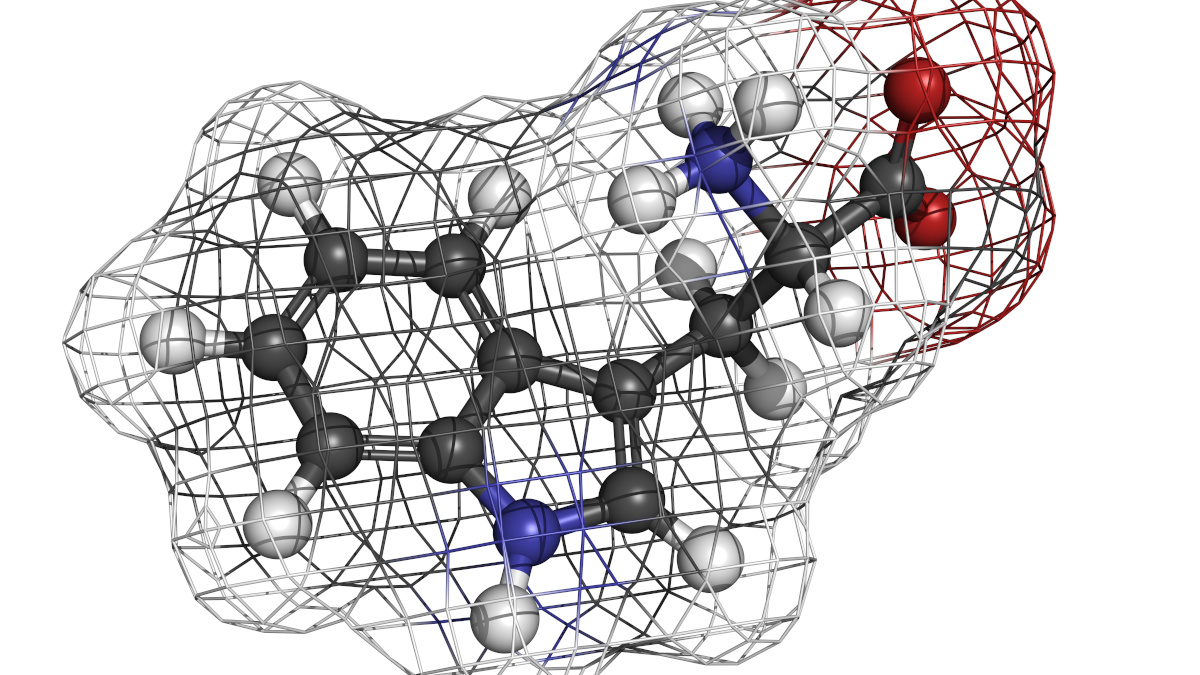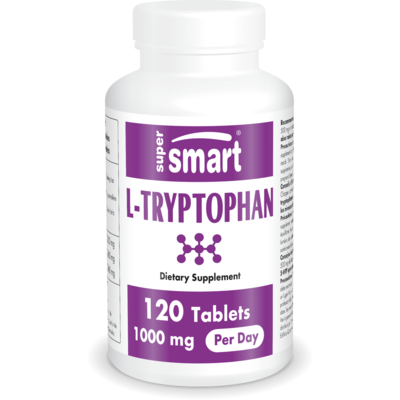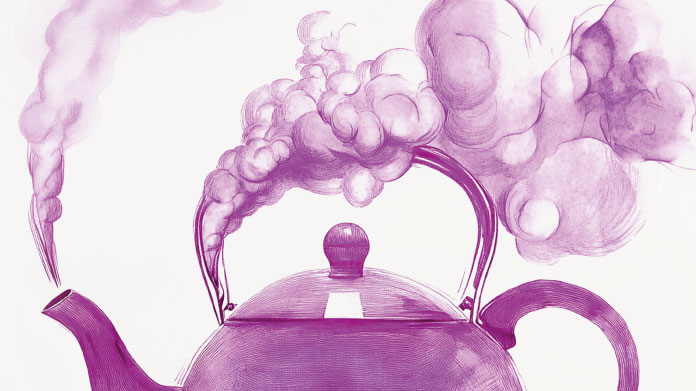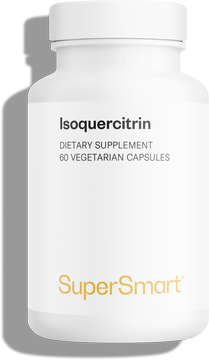When should you take tryptophan and where is it found in the diet?
There are many reasons why consumers choose to take tryptophan. Discover the benefits and dietary sources of this essential amino acid.

Tryptophan: an essential amino acid
Tryptophan is one of the 22 proteinogenic (protein-building) amino acids and also one of the 9 amino acids considered essential for health - those that cannot be made by the body and must be provided by the diet. Yet it represents just 1% of the amino acids present in proteins, and is thus the rarest amino acid in the body (1).
Tryptophan is nonetheless vital for numerous processes, including biosynthesis of serotonin and melatonin as well as endogenous production of L-kynurenine, a metabolite used to make niacin (vitamin B3) (2).
In actual fact, tryptophan is converted in the brain into 5-hydroxytryptophan (5-HTP), which is itself decarboxylated, particularly in the presence of vitamin B6, to produce serotonin, the neurotransmitter often referred to as a ‘feelgood hormone’ (3).
In summary then, tryptophan operates:
- in the muscles to produce proteins;
- in the brain to produce serotonin;
- in many types of tissue, including in the liver, to produce L-kynurenine, which is in turn used to produce niacin.
Health benefits of tryptophan
In and of itself, tryptophan offers no benefits, but as we’ve seen, it’s essential for many functions in the body (4) :
- tryptophan is a natural precursor of serotonin which is crucial for maintaining emotional equilibrium and calm, as well as promoting optimal relaxation, good quality sleep and an overall feeling of well-being;
- tryptophan is critical to the kynurenine pathway which is involved in physiological functions governing behavior, sleep, thermoregulation, etc;
- tryptophan is a precursor of melatonin which helps reduce the time it takes to fall asleep.
Many people therefore choose to take tryptophan to regain emotional balance, especially over the winter months when the days are shorter and there are fewer hours of sunlight, and/or to help them get a good night’s sleep (5).
In addition, numerous studies have been conducted over the past 20 years to variously identify the part played by tryptophan in the immune system (via its role in the kynurenine pathway), evaluate its potential as an alternative to ‘traditional’ anti-depressants and assess its value in combatting heart disease (6-8).
Thus, as a result of its role in many of the body’s processes, tryptophan is an essential amino acid about which new, indirect benefits are still being discovered on a regular basis.
Best food sources of tryptophan
As mentioned, tryptophan is an essential amino acid: it cannot be produced by the body and must be provided by the diet. It’s therefore important to find good dietary sources in order maintain good health.
The foods with the highest content of tryptophan include (9):
- brown rice;
- dairy products;
- meat;
- peanuts;
- soya protein;
- eggs;
- fish;
- seaweed;
- pulses;
- chocolate;
- bananas;
- walnuts, hazelnuts, almonds, etc. ;
- brewer’s yeast.
However, in order for tryptophan to be used in the brain to produce serotonin, it must first cross the blood-brain barrier. In this, it has to compete with other amino acids such as leucine, isoleucine, valine, tyrosine and phenylalanine (10).
This is where things gets complicated. The concentration of tryptophan’s amino acid competitors depends on the proportion of carbohydrates and protein in the diet.
A diet high in sugar benefits tryptophan, whereas a protein-rich diet works better for the other amino acids, and thus has an adverse effect on tryptophan’s function as a serotonin precursor.
In other words, a healthy, low-sugar, high-protein diet makes it harder for the tryptophan in food to cross the blood-brain barrier. It’s precisely to compensate for this, and increase tryptophan concentrations, that many people opt for tryptophan supplementation.
Tryptophan supplements
Supplementing with tryptophan allows you to control your intake of this essential amino acid and increase its levels in the bloodstream, thus strengthening its position in the contest to cross the blood-brain barrier and thus fulfilll its role of serotonin and niacin precursor.
So in order to ensure an adequate intake and obtain the benefits of this amino acid, more and more people are choosing to take a course of tryptophan supplements (such as L-Tryptophan, which provides a guaranteed 1000mg of tryptophan a day).
SuperSmart ADVICE
References
- PETERS, J. C. Tryptophan nutrition and metabolism: an overview. Kynurenine and serotonin pathways, 1991, p. 345-358.
- GOLDSMITH, Grace A., MILLER, O. Neal, et UNGLAUB, Walter G. Efficiency of tryptophan as a niacin precursor in man. The Journal of Nutrition, 1961, vol. 73, no 2, p. 172-176.
- WALTHER, Diego J., PETER, Jens-Uwe, BASHAMMAKH, Saleh, et al.Synthesis of serotonin by a second tryptophan hydroxylase isoform. Science, 2003, vol. 299, no 5603, p. 76-76.
- FRIEDMAN, Mendel. Analysis, nutrition, and health benefits of tryptophan. International Journal of Tryptophan Research, 2018, vol. 11, p. 1178646918802282.
- RIEDEL, Wim J., KLAASSEN, Tineke, et SCHMITT, Jeroen AJ. Tryptophan, mood, and cognitive function. Brain, behavior, and immunity, 2002, vol. 16, no 5, p. 581-589.
- MOFFETT, John R. et NAMBOODIRI, MA ARYAN. Tryptophan and the immune response. Immunology and cell biology, 2003, vol. 81, no 4, p. 247-265.
- SHAW, Kelly A., TURNER, Jane, et DEL MAR, Chris. Tryptophan and 5‐Hydroxytryptophan for depression. Cochrane Database of Systematic Reviews, 2002, no 1.
- FLOC’H, Le, OTTEN, Winfried, MERLOT, Elodie, et al.Tryptophan metabolism, from nutrition to potential therapeutic applications. Amino acids, 2011, vol. 41, no 5, p. 1195-1205.
- HERDERICH, Markus et GUTSCHE, Birgit. Tryptophan‐derived bioactive compounds in food. Food Reviews International, 1997, vol. 13, no 1, p. 103-135.
- PARDRIDGE, W. M. The role of blood-brain barrier transport of tryptophan and other neutral amino acids in the regulation of substrate-limited pathways of brain amino acid metabolism. Transport mechanisms of tryptophan in blood cells, nerve cells, and at the blood-brain barrier, 1979, p. 43-54.
1 Days
A Product worth waiting for when not…
A Product worth waiting for when not available and then arriving as a surprise!
DOMINIC
2 Days
On time shipping
On time shipping
GEORGE Verne
4 Days
Ordering was easy and the product was…
Ordering was easy and the product was delivered with no problems. Appreciated that I was notified when it would arrive. Thanks!
MascarC
10 Days
Great customer service - responsive …
I ordered from them and my item was unavailable for sometime. I was super happy when they reactivated my order and shipped my item which arrived very quickly. Great customer service.
Ruth Rueter
10 Days
Super fast shipping
Super fast shipping
Donald Borling
14 Days
Reputable companysearch and the number of…
The research and the number of selection of products.
NAKHJAVAN Shervin
27 Days
The Anti Aromatase is a great product
The Anti Aromatase is a great product. You just need to have constant inventory. Recently this product has been out of stock.
GEORGE Verne
28 Days
Great help on chat
Great help on chat. Knowledgeable and friendly.
Jason Argos
32 Days
Customer service was fast and friendly.
Customer service helped to stop the transaction process of the subscription. I appreciated that.
Greenie
32 Days
I order here due to the high quality of…
I order here due to the high quality of the products and the quick delivery of items - thank you
Barbara J
33 Days
SuperSmart's Eye Pressure supplements: highly recommended!
I purchase SuperSmart's Eye Pressure supplements regularly for over 5 years, and gotta say they are truly a wonderful product for my Glaucoma. Highly recommended if you have eye pain from your Glaucoma.
D. Martinez
38 Days
Quick service
Quick service
MONELL
39 Days
Speedy service.
Speedy service.
ROSENTHAL Marvin
42 Days
Clear website- Efficient
Clear website. Excellent search engine and fast delivery!
Mohamad Hussein
45 Days
They have great products.
They have great products.
Vickie






